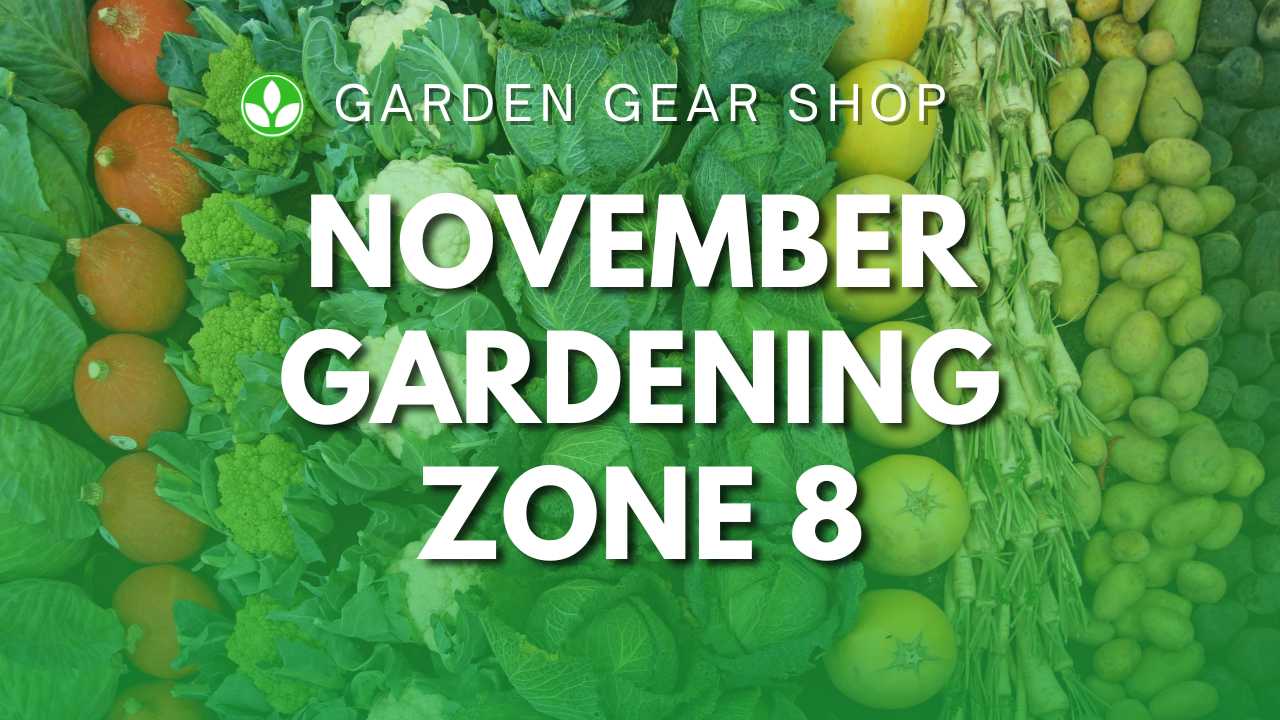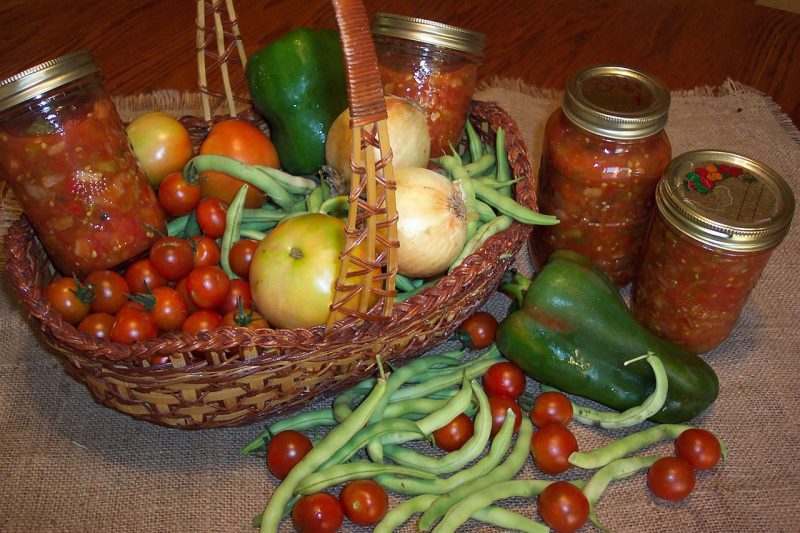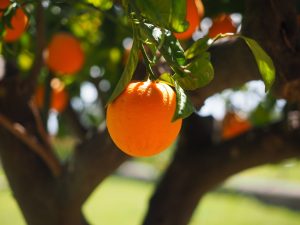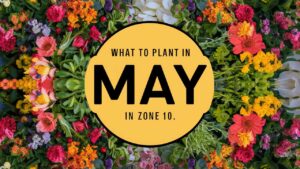November in Zone 8 signals a shift in the gardening calendar. While the vibrant hues of fall may be fading, November gardening isn’t about winding down; it’s about preparing for the winter ahead and laying the groundwork for a bountiful spring.
This is a crucial period for protecting existing plants, planning for next year’s garden, and enjoying the last bursts of harvest before the true chill sets in.
This in-depth guide will explore the unique challenges and opportunities of November gardening in Zone 8, providing you with practical advice to ensure your garden thrives through the colder months.
November’s Zone 8 Microclimates: Understanding Your Specific Needs
Zone 8 itself encompasses a wide range of microclimates. Coastal Zone 8 areas, for instance, will experience milder temperatures and higher humidity than inland areas.
Elevation also plays a significant role; higher elevations will experience earlier and more intense frosts. Before diving into specific November tasks, it’s crucial to understand your specific location within Zone 8.
Factors like proximity to water bodies, prevailing winds, and the presence of hills or valleys can dramatically influence your garden’s needs in November. Consider keeping a detailed garden journal throughout the year to note the microclimate’s impact on your plants.
This personalized data will inform your November gardening decisions, ensuring you tailor your approach to your unique environment. For example, a gardener in a coastal Zone 8 might need to focus on protecting against salt spray, while an inland gardener might prioritize frost protection. Understanding these nuanced differences is key to successful November gardening in Zone 8.
Protecting Existing Plants: A November Checklist for Zone 8 Gardens
November in Zone 8 often brings the first significant frosts, posing a threat to tender plants. Protecting your valuable specimens is paramount. For November gardening in Zone 8, consider these crucial steps:
Mulching:
Applying a thick layer of mulch (at least 3-4 inches) around the base of vulnerable plants is crucial. Mulch insulates the soil, preventing temperature fluctuations that can damage roots. Use organic materials like shredded leaves, pine straw, or wood chips. Avoid using mulch too close to the plant stems, as this can promote rot.
Frost Protection Cloches:
For particularly sensitive plants, consider using frost protection cloches or row covers. These lightweight coverings create a microclimate around the plant, preventing frost damage. Remember to remove them during the day to allow for adequate sunlight and air circulation. This is especially important in November, when sunlight hours are decreasing.
Watering:
While watering needs decrease in November, ensure your plants receive adequate moisture before the ground freezes. Deep watering helps plants establish strong root systems that can better withstand the cold. However, avoid overwatering, as soggy soil is more susceptible to frost damage. Adjust your watering schedule based on rainfall and soil conditions.
Winterizing Containers:
Bring potted plants indoors or provide them with extra protection. Group containers together to create a microclimate, and wrap them with burlap or bubble wrap to insulate them against the cold. Moving them against a south-facing wall can also help them retain heat. Remember, November gardening in Zone 8 requires proactive measures to safeguard your containerized plants.
Pruning:
While major pruning is best left for late winter or early spring, some light pruning of dead or diseased branches can be beneficial in November. This improves air circulation and reduces the risk of fungal diseases. Remember to sterilize your pruning tools to prevent the spread of disease.
November’s Harvest and the Art of Preservation in Zone 8
November in Zone 8 still offers a chance for harvesting late-season crops. Depending on your specific location and planting schedule, you might still be harvesting kale, collard greens, Brussels sprouts, and root vegetables like carrots and turnips. Preserving your harvest is crucial to enjoying the fruits of your labor throughout the winter. November gardening in Zone 8 emphasizes preservation techniques:
Freezing: Freezing is an excellent method for preserving leafy greens and some root vegetables. Blanch vegetables briefly before freezing to maintain their color and texture.
Canning: Canning is ideal for preserving tomatoes, peppers, and other fruits and vegetables. Follow proper canning procedures to ensure food safety.
Root Cellaring: If you have space, root cellaring is a fantastic way to store root vegetables like potatoes, sweet potatoesand beets over the winter. A cool, dark, and humid environment is ideal for root cellaring.
Drying: Herbs and some vegetables can be dried for later use. Hang them upside down in a well-ventilated area or use a food dehydrator.
Proper preservation techniques extend the life of your November harvest, ensuring you can enjoy the flavors of your garden long after the first frost. This is an integral part of successful November gardening in Zone 8.
Planning for Spring: November’s Role in Zone 8 Garden Design
While November might seem like the end of the growing season, it’s actually a prime time for planning your spring garden. November gardening in Zone 8 shouldn’t neglect the future.
Soil Testing:
Conduct a soil test to determine its pH and nutrient levels. This information will help you amend the soil appropriately in preparation for spring planting. Knowing your soil’s composition is crucial for healthy plant growth. Amendments can be added in November, allowing them to integrate into the soil over the winter.
Composting:
Begin composting fallen leaves and garden debris. This will create nutrient-rich compost to enrich your soil next spring. November’s leaf drop provides ample material for composting, making it a productive time for this essential gardening task.
Seed Starting Indoors:
For an early start on the spring season, begin starting seeds indoors for cool-season crops like lettuce, spinach, and broccoli. November provides ample time for these seeds to germinate before transplanting outdoors in the spring.
Bulb Planting:
Plant spring-flowering bulbs like tulips, daffodils, and hyacinths. These bulbs need time to establish their root systems before spring’s bloom. November is the perfect time for planting these, ensuring a spectacular spring display.
Garden Design and Planning:
Use the downtime of November to plan your spring garden layout. Consider crop rotation, companion planting, and the overall design of your garden beds. Sketching out your plans can help you optimize space and maximize yields.
November’s Unexpected Delights: Enjoying the Late-Autumn Garden in Zone 8
While November focuses on preparation and protection, it also offers opportunities for late-autumn enjoyment. November gardening in Zone 8 isn’t solely about work; it’s about appreciating the unique beauty of the season.
Winter Interest Plants: Embrace plants that offer visual interest throughout the winter months. Consider evergreens, ornamental grasses, and plants with interesting bark textures. These plants add beauty to your garden even when other plants are dormant.
Birdwatching: As migratory birds pass through, November is a great time for birdwatching. Provide food and water sources to attract birds to your garden. Creating a bird-friendly environment adds another layer of enjoyment to your November garden.
Garden Clean-up and Reflection: Take time to clean up your garden, removing spent plants and debris. This process allows for reflection on the past growing season, identifying successes and areas for improvement. This reflective practice informs your future gardening endeavors.
Relaxation and Contemplation: Enjoy the quieter aspects of your garden in November. The cooler temperatures and shorter days create a peaceful atmosphere, perfect for relaxing and contemplating the beauty of nature.
Dealing with Pests and Diseases in November’s Zone 8 Garden
While pest activity slows down in November, it’s still important to remain vigilant. November gardening in Zone 8 requires attention to potential pest and disease issues:
Inspect Plants: Regularly inspect your plants for signs of pests or diseases. Early detection is crucial for effective treatment.
Clean Up Debris: Remove fallen leaves and other debris to eliminate potential overwintering sites for pests and diseases. This preventative measure is essential for minimizing problems in the spring.
Treat Diseases: If you notice any signs of disease, take appropriate action to treat them. Consult with a local garden center or extension office for advice on specific treatments.
Pest Traps: Consider using pest traps to monitor pest populations. This helps you gauge the severity of any infestations and take appropriate measures.
November gardening in Zone 8 is a unique blend of preparation for winter and anticipation for spring.
By understanding your specific microclimate, protecting existing plants, preserving your harvest, planning for the future, and enjoying the quieter moments of the season, you can ensure a successful transition into winter and set the stage for a bountiful spring garden.
Remember to adapt these guidelines to your specific location and the unique characteristics of your garden.


















